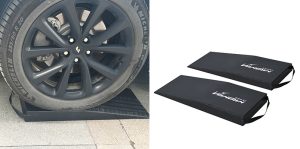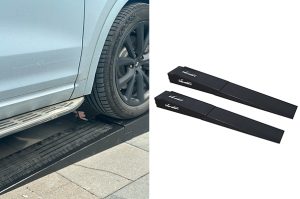From construction machinery and agricultural vehicles to military, rescue, and mobility equipment, custom trailer ramps have become an essential solution for ensuring safe, efficient, and damage-free loading and unloading.
Why Standard Trailer Ramps Are Not Always Enough
Off-the-shelf trailer ramps are typically designed for general-purpose vehicles such as motorcycles, ATVs, and light machinery. However, special vehicles and equipment often present challenges such as:
- Non-standard wheel spacing or track width
- Extreme weight loads beyond regular ramp capacity
- Low ground clearance or long wheelbases
- Uneven weight distribution
- Track-based equipment instead of wheels
In such cases, using standard ramps increases the risk of slippage, structural failure, equipment damage, and serious safety事故. Custom trailer ramps are engineered specifically to eliminate these risks.
Key Advantages of Custom Trailer Ramps
1. Perfect Load Matching
Custom ramps are designed with the exact load capacity required—whether for compact utility vehicles or 30-ton construction machines—ensuring zero over-design or safety compromise.
2. Optimized Loading Angle
Ramp length and slope are customized to protect low-clearance vehicles, hydraulic machinery, and sensitive undercarriages from impact damage.
3. Enhanced Safety and Stability
Anti-slip surfaces, reinforced side curbs, traction rungs, and locking systems are all adapted to the operating environment and equipment type.
4. Improved Loading Efficiency
Faster, smoother loading means reduced labor time, improved fleet turnaround, and higher daily operating capacity.
5. Long-Term Cost Savings
By preventing accidents, reducing equipment wear, and minimizing downtime, custom trailer ramps deliver excellent return on investment.
Special Vehicles and Equipment That Require Custom Trailer Ramps
1. Construction Equipment
- Excavators
- Skid steer loaders
- Bulldozers
- Rollers
These machines require extra-wide, heavy-duty, reinforced steel ramps with high traction and structural rigidity.
2. Agricultural Machinery
- Tractors
- Harvesters
- Sprayers
Custom ramps for agriculture often include corrosion-resistant coatings and mud-shedding traction surfaces.
3. Military and Emergency Vehicles
- Armored vehicles
- Rescue trucks
- Firefighting units
These require rapid-deployment, ultra-strong, field-ready ramp systems with extreme load ratings.
4. Mobility and Accessibility Equipment
- Wheelchair vehicles
- Medical transport units
- Special access trailers
These ramps prioritize low-angle slopes, smooth transitions, and full accessibility compliance.
Market Trends Driving Demand for Custom Trailer Ramps
- Growth in specialized logistics and heavy transport
- Expansion of construction and infrastructure projects
- Rising demand for emergency response and mobility solutions
- Increasing adoption of automated and hydraulic ramp systems
- Stricter global workplace safety regulations
As operations become more specialized, the demand for customized loading systems continues to rise globally.
Custom trailer ramps are no longer a niche solution—they are a critical component of safe, efficient, and professional equipment transport. For special vehicles and non-standard machinery, customized ramp systems provide the only reliable way to ensure optimal loading angles, proper weight distribution, and long-term structural safety.




